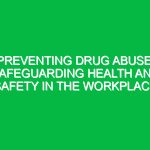Introduction
Personal Protective Equipment, commonly referred to as PPE, plays a crucial role in safeguarding individuals in various work environments, particularly in the Health, Safety, and Environment (HSE) domain. But what does PPE stand for in this context? It represents a range of protective gears designed to minimize exposure to hazards that can cause serious workplace injuries and illnesses. As industries continue to evolve, the importance of understanding and implementing effective PPE strategies cannot be overstated.
In this comprehensive guide, we will delve into the various facets of PPE, exploring its significance, types, benefits, best practices, and the regulations that govern its use. Whether you are an employer, employee, or safety professional, understanding what PPE entails and how it applies to your work environment is essential for ensuring safety and compliance.
What Does PPE Stand For?
PPE stands for Personal Protective Equipment. This term encompasses a wide array of safety gear designed to protect workers from hazards that could potentially endanger their health or safety. These hazards can range from chemical exposure, physical injuries, electrical risks, and environmental dangers, to biological threats. The use of PPE is a fundamental aspect of workplace safety protocols and is often mandated by health and safety regulations.
The Key Components of PPE
Understanding the different components of PPE is vital for effective risk management in any workplace. Here are the primary categories of PPE:
- Head Protection: Hard hats and helmets protect against falling objects and head injuries.
- Eye and Face Protection: Safety goggles, glasses, and face shields guard against chemical splashes, flying debris, and other hazards.
- Respiratory Protection: Masks and respirators prevent inhalation of harmful substances, including dust, fumes, and gases.
- Hearing Protection: Earplugs and earmuffs shield against damaging noise levels.
- Hand Protection: Gloves protect against cuts, chemical exposure, and thermal hazards.
- Body Protection: Coveralls, aprons, and vests provide a barrier against chemical spills, heat, and sharp objects.
- Foot Protection: Safety boots and shoes with reinforced toes protect against heavy objects and slippery surfaces.
Each component of PPE serves a distinct purpose and is tailored to address specific hazards in the workplace. Selecting the appropriate PPE is essential for maximizing safety and minimizing risks.
The Importance of PPE in HSE
PPE is a critical component of a comprehensive HSE strategy. Its significance can be broken down into several key areas:
1. Reducing Workplace Injuries and Illnesses
The primary purpose of PPE is to protect workers from injuries and illnesses. In high-risk environments such as construction sites, chemical plants, or healthcare facilities, the potential for accidents is substantial. Proper PPE can significantly reduce the likelihood of injuries, ensuring that workers return home safely each day.
2. Enhancing Compliance with Regulations
Various regulations govern the use of PPE in many countries, including the Occupational Safety and Health Administration (OSHA) standards in the United States and the Health and Safety Executive (HSE) guidelines in the UK. Compliance with these regulations is not only a legal requirement but also essential for creating a culture of safety within an organization.
3. Promoting a Safety Culture
When organizations prioritize PPE, they foster an environment where safety is valued. This culture encourages employees to take personal responsibility for their safety and that of their colleagues. A strong safety culture can lead to increased productivity and morale, as workers feel secure in their environments.
Best Practices for PPE Use
To maximize the effectiveness of PPE, organizations should implement best practices for its use. Here are some essential guidelines:
1. Conduct a Risk Assessment
Before selecting PPE, it’s crucial to conduct a thorough risk assessment to identify potential hazards in the workplace. Understanding the specific risks employees face will guide the selection of appropriate PPE.
2. Provide Training
Training employees on the proper use, maintenance, and limitations of PPE is vital. Workers should understand when and how to use PPE and the importance of wearing it consistently.
3. Ensure Proper Fit
PPE must fit correctly to be effective. Ill-fitting equipment can be uncomfortable and may not provide the intended protection. Employers should ensure that PPE is available in various sizes and that employees are encouraged to test their gear for comfort.
4. Regularly Inspect and Maintain PPE
PPE should be regularly inspected for wear and tear, and any damaged items should be replaced immediately. Maintenance schedules should be established to ensure that equipment remains in good condition.
5. Promote a Culture of Safety
Encourage workers to report unsafe conditions and provide feedback on PPE use. Creating an open dialogue about safety can lead to improvements and greater compliance with PPE protocols.
Identifying and Managing Hazards Related to PPE
While PPE is essential for safety, it is equally important to recognize that it is not a standalone solution. Identifying potential hazards in the workplace is crucial for effective PPE management. Here are some common hazards and how to manage them:
- Chemical Exposure: Conduct regular assessments of chemicals used in the workplace and ensure appropriate respiratory protection is available.
- Physical Hazards: Identify sources of falling objects and provide head protection to workers in high-risk areas.
- Noise Hazards: Monitor noise levels and provide hearing protection in areas where sound levels exceed regulatory limits.
- Ergonomic Hazards: Assess work processes to identify potential musculoskeletal injuries and provide appropriate gloves and supports.
By proactively addressing these hazards, organizations can further enhance the effectiveness of their PPE programs.
Regulations and Standards Governing PPE
Understanding the regulations surrounding PPE is vital for compliance and safety. Various agencies have established guidelines and standards that govern the use of PPE in the workplace.
1. OSHA Standards
In the United States, the Occupational Safety and Health Administration (OSHA) sets forth regulations regarding PPE. These standards require employers to assess hazards and provide appropriate PPE to employees at no cost. Employers must also ensure that PPE is properly maintained and that employees are trained in its use.
2. HSE Regulations
In the UK, the Health and Safety Executive (HSE) provides comprehensive guidance on PPE use. The Personal Protective Equipment at Work Regulations 1992 require employers to provide suitable PPE where risks cannot be adequately controlled by other means.
3. ISO Standards
The International Organization for Standardization (ISO) publishes standards related to PPE, including ISO 20345 for safety footwear and ISO 9001 for quality management systems. Adhering to these standards ensures that PPE meets international safety benchmarks.
Conclusion
In summary, understanding what PPE stands for and its critical role in health, safety, and environmental practices is essential for any workplace. Personal Protective Equipment is not just a legal requirement; it is a vital component of a safe working environment. By selecting the appropriate PPE, conducting regular training, and fostering a culture of safety, organizations can significantly reduce workplace injuries and illnesses.
As industries continue to evolve, the responsibility of ensuring worker safety remains paramount. We must continuously assess our practices, stay informed about regulations, and adapt to new challenges that arise in the workplace. By doing so, we not only comply with legal requirements but also promote the well-being of our most valuable asset—our people.


